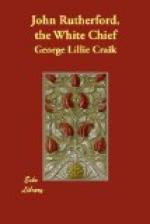Among the Indians of America, some races are much more tattooed than others, and some scarcely at all. It it stated that, among the Iroquois only, a few of the women are in the habit of tracing a single row of this sort of embroidery along the jaw; and that merely with the intent of curing or preventing toothache, an effect which they conceive is produced by the punctures destroying certain nerves. It appears to be the general practice in America, first to finish the cutting, or graving of the lines, and afterwards to introduce the colouring, which is commonly made of pulverised charcoal. This last part of the operation occasions by far the greatest pain. Among the native tribes of Southern Africa, the fashion is merely to raise the epidermis by a slight pricking, which is described as affording rather a pleasurable excitement.
At the Society Isles these marks, according to Cook, were so general, that hardly anybody was to be seen without them. Persons of both sexes were commonly tattooed about the age of twelve or fourteen; and the decorations, which Cook imagined to vary according to the fancy, or perhaps, which is more likely, the rank of the individual, were liberally bestowed upon every part of the body, with the exception, however, of the face, which was generally left unmarked. They consisted not only of squares, circles, and other such figures, but frequently also of rude delineations of men, birds, dogs, and other animals. Banks saw the operation performed on a girl of about thirteen years of age, who was held down all the while by several women, and both struggled hard and made no little outcry as the artist proceeded with his labours. Yet it would seem that the process in use here is considerably more gentle than that practised in New Zealand; for the punctures, Cook affirms, could hardly be said to draw blood. Being afflicted by means of an instrument with small teeth, somewhat resembling a fine comb, the effect would be rather a pricking than a cutting, or carving, of the flesh. Unlike what we have seen to be the practice among the American savages, the tincture was here introduced by the same blow by which the skin was punctured. The substance employed was a species of lamp black, formed of the smoke of an oily nut which the natives burned to give them light.
The practice of tattooing is now, we believe, discontinued at Otaheite; but the progress of civilization has not yet altogether banished it at the Sandwich Islands. When Lord Byron was at Hawaii, in 1825, he found it used as a mark of mourning, though some still had themselves tattooed merely by way of ornament. On the death of one of the late kings of the island, it is stated that all the chiefs had his name and the date of his death engraved in this manner on their arms. The ladies here, it seems, follow the very singular practice of tattooing the tips of their tongues, in memory of their departed friends. In the Tonga, or Friendly Islands, it would appear from Mariner’s very




